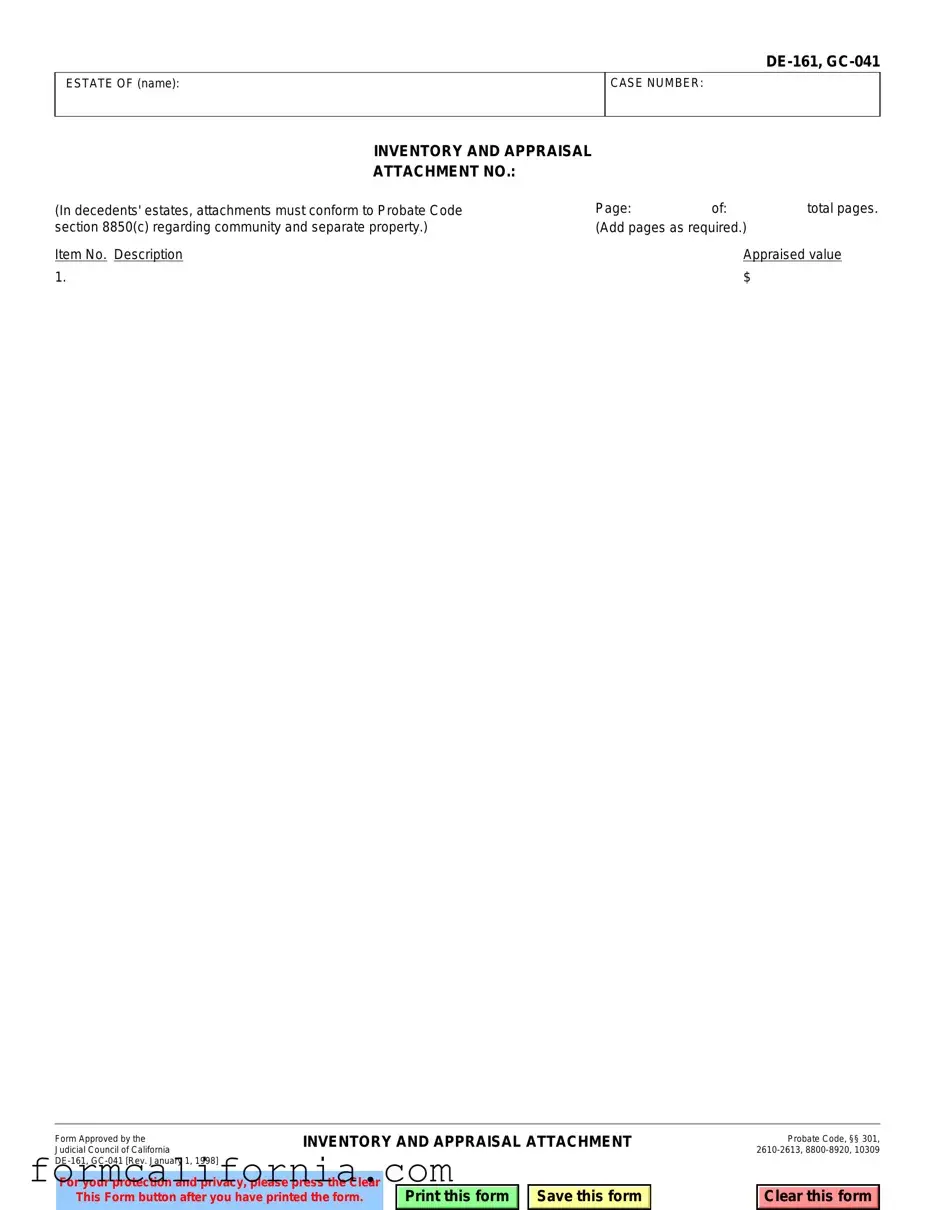The DE-161, GC-041 form, while unique in its specifics, shares similarities with several other legal documents. One such document is the Schedule of Assets in a trust administration. Both documents are integral for detailing and valuing property within an estate, albeit in different legal contexts. The DE-161, GC-041 form is used in probate for deceased estates to inventory assets and appraise their values, ensuring proper distribution in accordance with the decedent's wishes or state law. Similarly, the Schedule of Assets for a trust outlines all assets held within the trust, providing a clear valuation and description. Each serves to create transparency and inform beneficiaries and courts about the nature and extent of an estate or trust's assets.
Another comparable document is the Financial Affidavit often used in divorce proceedings. This affidavit requires a comprehensive listing of one's assets, liabilities, income, and expenses, much like the Inventory and Appraisal form that demands a detailed account and valuation of estate assets. Both documents aim to disclose financial information for fair adjudication — the former in the context of equitably dividing assets between divorcing parties, and the latter for appropriately distributing assets of a deceased's estate among heirs and creditors.
Similarly, the Personal Property Memorandum, which can accompany a will, has parallels to the DE-161, GC-041 form. This memorandum typically lists personal items and their desired recipients as stated by the will's creator, serving a purpose akin to that of detailing personal property within an estate for inventory and appraisal. While the Personal Property Memorandum might not always include valuations as the DE-161, GC-041 form does, both documents facilitate the deliberate distribution of assets in accordance with documented wishes.
Lastly, the Business Inventory and Appraisal form often used in business sales or valuations shares a resemblance with the DE-161, GC-041 form, as both provide a systematic method for listing and valuing assets. In a business context, this type of document is crucial for understanding the value of a business's assets during a sale, purchase, or merger. Likewise, the DE-161, GC-041 form serves a similar purpose within the probate process, ensuring that the estate is accurately appraised and inventoried for proper processing and distribution.

